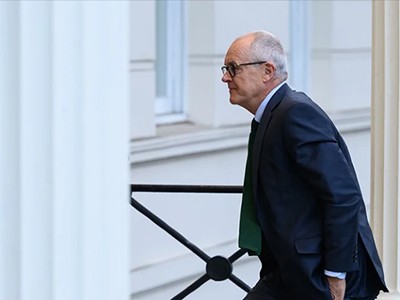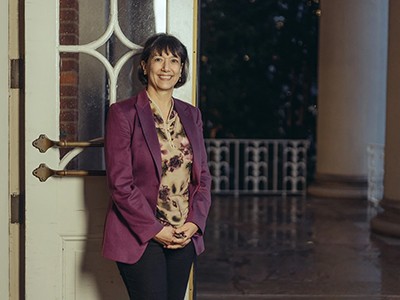Scientists joined climate activists in challenging the UK government’s fossil-fuel policies in London in September 2023.Credit: Vuk Valcic/SOPA Images/LightRocket/Getty
When Science Meets Power Geoff Mulgan Polity (2023)
Relations between scientific communities and governments are often tense — think back to how science advisers were both given a platform and criticized during the COVID-19 pandemic. Although scientists and policymakers should be allies, working together and enhancing one another’s efforts to solve society’s problems, in reality they often compete for power and fight for superiority.
When Science meets Power explores that dynamic. This engaging book by Geoff Mulgan, a public-policy researcher at University College London, is packed with wisdom and is written with a deep analytical prowess that has been acquired over decades of work at this interface — including as director of policy to former UK prime minister Tony Blair and founder of the progressive think-tank Demos. With his inside view, Mulgan’s account is a breath of fresh air that stands apart from others that only theorize on science’s role in political decision-making.
The struggle between science and government, Mulgan explains, stems in part from their having similar objectives yet different approaches to achieving them. Both sides aim to provide solutions for society, but policymakers need answers immediately, whereas scientists can afford the luxury of waiting to gain perfect understanding. Mayors of cities, such as Mombasa, Kenya, that frequently face floods need to take informed steps quickly to limit damage. They cannot wait years for better computer models to offer optimal solutions.

‘Politicians don’t understand science’: advisers give evidence at UK COVID inquiry
Science also walks a systematic journey, hypothesizing, theorizing and refining research questions and methods inside boundaries that can be controlled. However, a government’s path from problem to solution is often dictated by circumstances out of its control, such as when it is dealing with the complex aftermath of a natural disaster or trying to reduce crime. The definition and boundaries of the problem can shift, as can the resources that are available, leading scientists to view these pragmatic decision-making processes as subjective and irrational.
What does this relationship look like? Mulgan describes times when the state was the dominant partner, and science had to fight for recognition. For example, Soviet physicist Peter Kapitsa discreetly wrote to then-leader Joseph Stalin in 1945 asking for respect for science alongside the state and the economy, with the view that these three pillars should be equally important in helping the country to move forward. Similarly, in Uganda in the mid-1970s, scientists were at the mercy of the militarized state under then-president Idi Amin. Many lived in fear or fled the country, because their influence was perceived to rival that of the politicians.
It seems to me that this relationship will always be a seesaw, with power rocking back and forth as times, places, situations and players change. Reading When Science meets Power also has me wondering about the role of culture in this dynamic, whether individual, group or jurisdictional. Chief US and UK science advisers, for example, might experience different atmospheres depending on who is president or prime minister at the time and the nature of the social, legal and institutional systems in which they operate. Each shift in shared ideas, social behaviours and systems of knowledge influences the value placed on science or government. For example, in today’s period of polarized politics, populism and fake news, the balance is tipping once again. Science is losing some of its power and politics is again gaining the upper hand.

Immunologist Anthony Fauci (left) advised US leaders after COVID-19 spread in 2020.Credit: Drew Angerer/Getty
The question, then, is how can scientists and policymakers create mutual respect and understanding when power lies in one court or the other? Both might learn from occasions when science and the state have worked closely, if only for a while. For example, during the COVID-19 pandemic, many governments looked to scientists for advice in decision-making, and the scientific community expected the state to act on that advice. Even if there was friction, both worlds acknowledged each other’s value in running society.
I think that one answer lies in what Mulgan also calls for: more collaboration and better links between science and governance. Another answer lies in harnessing opportunities to work synergistically. For example, governments can use artificial intelligence (AI) to increase the efficiency of their health, information and transport sectors, and scientists can help them to do that. But scientists and the public also need AI to be regulated to help realize its potential and manage its rapid growth while stopping it from causing harm.

New NIH chief opens up about risky pathogens, postdoc salaries and the year ahead
Maintaining public trust is another point of connection. Concerns over technologies such as nuclear weapons, gene editing and AI mean that many members of the public want politicians to keep the frontiers of science in check. Similarly, people weary of politicians’ motives want scientists to hold them to account. Scientists and government working together effectively might comfort the public.
In my favourite part of the book, Mulgan highlights the importance of brokers and intermediaries who work at the interface between science and government, developing structures, relationships and networks that improve access and linkages. Intermediaries’ ability to “think about thought and to be intelligent about intelligence” makes them crucial for raising awareness of each side’s issues and for promoting self-regulation, which would otherwise be difficult for either side.
In conclusion, it is important to understand that the science–policy interface is not a meeting point but a continuum — a pendulum of power that swings from one side to the other, with a rare point of equilibrium at which science and government are mutually respectful allies. Extending the point of equilibrium and improving the power relationship between science and government requires each side investing in understanding how the other’s world works, and what, where and when the intersection of these two is. Investing in government science advisers and other knowledge brokers can ease the tension between the two worlds. Mulgan’s excellent analysis lays a strong foundation on which these essential investments can be made.
Competing Interests
The author declares no competing interests.
